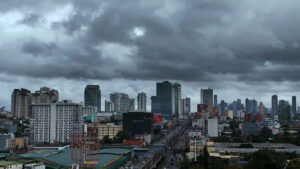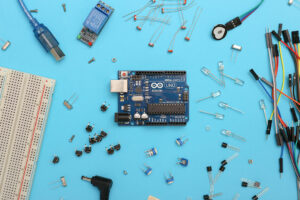By Katherine K. Chan
THE PHILIPPINE government should further invest in education to ensure that the economy will benefit from the projected boom of the Generation Alpha population in a few years, analysts said.
John Paolo R. Rivera, a senior research fellow at the Philippine Institute for Development Studies, said the expected growth of the young tech-savvy population presents a “huge opportunity and serious responsibility” for the Philippine economy.
“A young, tech-savvy consumer base means rising demand for digital services, education, housing, mobility, and lifestyle products, which can drive long-term domestic growth and make (the Philippines) one of Asia’s most dynamic consumer markets,” he told BusinessWorld in a Viber message.
Fitch Solutions unit BMI said in a report released late in October that Gen Alpha, or those born between 2010 and 2024, will constitute 27% of the Philippine population in 2030, the highest in Asia.
The Philippines’ total population reached 112.73 million as of July 1, 2024, based on the latest Philippine Statistics Authority data.
Gen Alpha, born into an era of advanced technology and exposed to innovations such as artificial intelligence from a young age, is recognized as the “digital native” generation.
By 2026, their ages will range from one to 16 years old.
Cid L. Terosa, a senior economist at the University of Asia and the Pacific (UA&P), said the growing Gen Alpha population will expand the labor force and help stimulate business activity and economic growth.
“That augurs well for the economy since the great number of Generation Alpha can mean more labor resources to drive business and economic activities,” he told BusinessWorld in an e-mail.
Mr. Rivera also said that the demographic being widely “English-speaking and adaptable” could help the Philippines develop its labor-intensive and digital industries.
Meanwhile, Gen Alphas are seen to boost the Philippines’ market as they are poised to become an emerging consumer segment for investors.
“They represent a potential market for both domestic and foreign investors,” Mr. Terosa said. “In short, they represent not only greater potential human capital but also greater market potential for the Philippines and the rest of the world.”
By yearend, BMI said the Gen Alpha global population will reach two billion, making up nearly a quarter or 24.2% of the 8.3 billion global population.
“I’m skeptical that this iteration of the demographic dividend will be more fruitful for the Philippine economy than the last, simply because the country has yet to address a few key problems, namely, underinvestment in human capital (i.e. educational standards) and brain drain,” Miguel Chanco, chief emerging Asia economist at Pantheon Macroeconomics, told BusinessWorld in an e-mail.
At the same time, Mr. Rivera said the young demographic could only become productive contributors to the economy if the government prioritizes investments in education, skills training, digital infrastructure, and job creation.
“(T)o fully benefit from this demographic dividend, NG (National Government) must invest heavily in education, skills development, digital infrastructure, and job creation to ensure that these young Filipinos are productive participants in the global economy, not just consumers,” he said.
Mr. Terosa also said Gen Alphas must learn about emerging industries and technology to adapt to evolving trends.
“We need to raise the value or quality of the potential labor or human resources supplied by Generation Alpha,” he said. “We can do this through formal and informal education relevant to emerging industries and technology. They need to be agile and nimble in adapting to global economic and business trends.”
The UA&P economist also said that the government should promote domestic and foreign investments to generate more employment opportunities for the growing youth population.
Earlier this year, Economic Undersecretary Rosemarie G. Edillon said Gen Z, or those born between 1995 and 2012, and Gen Alpha will account for the bulk of the country’s workforce by 2035.
“The key is to turn population growth into human capital strength by improving learning outcomes, upskilling for artificial intelligence and green industries, and expanding opportunities in high-value sectors,” Mr. Rivera said. “If these investments are made early, (the Philippines) can convert its youth advantage into sustained growth, innovation, and regional competitiveness well beyond 2030.”


















